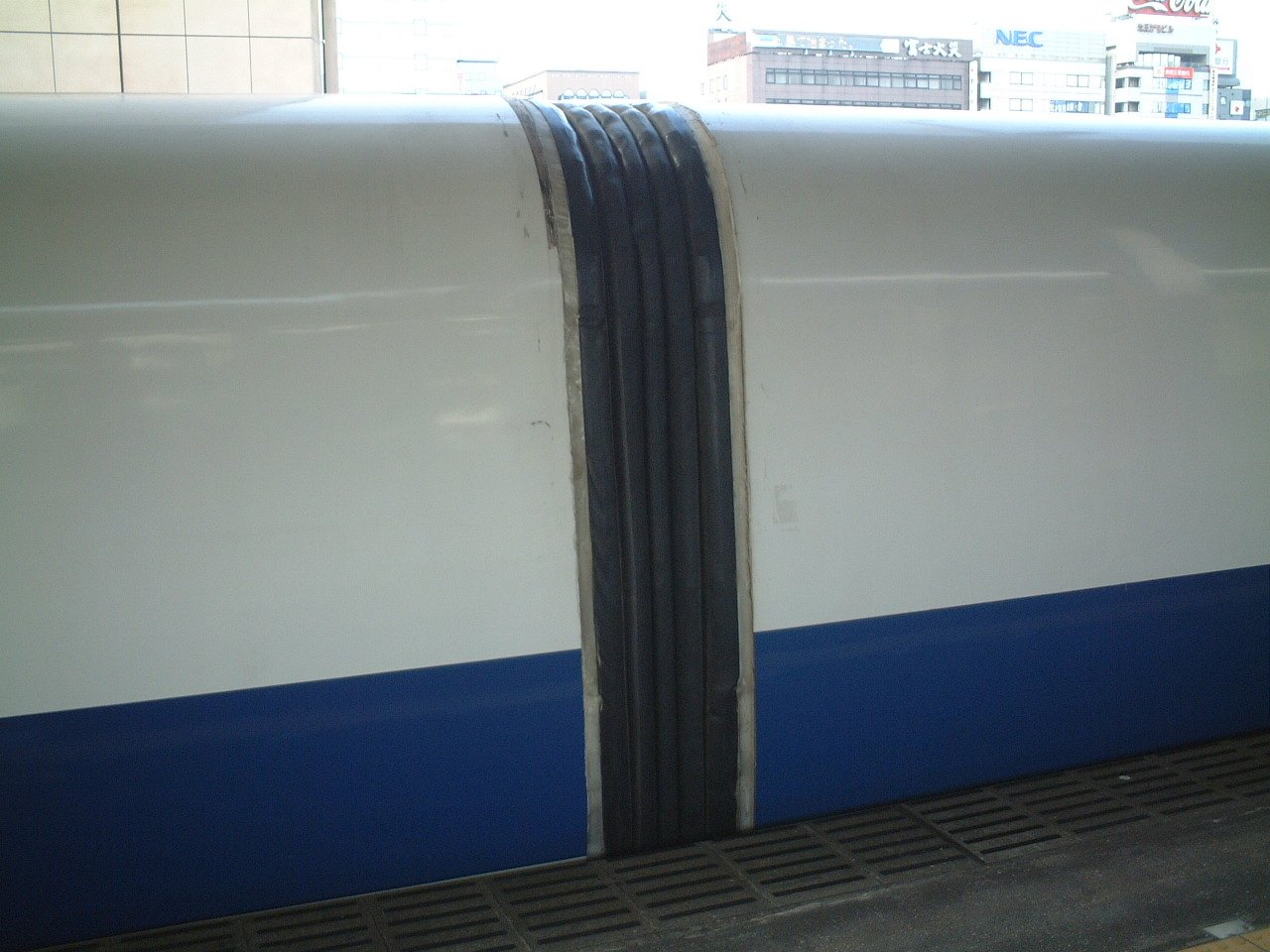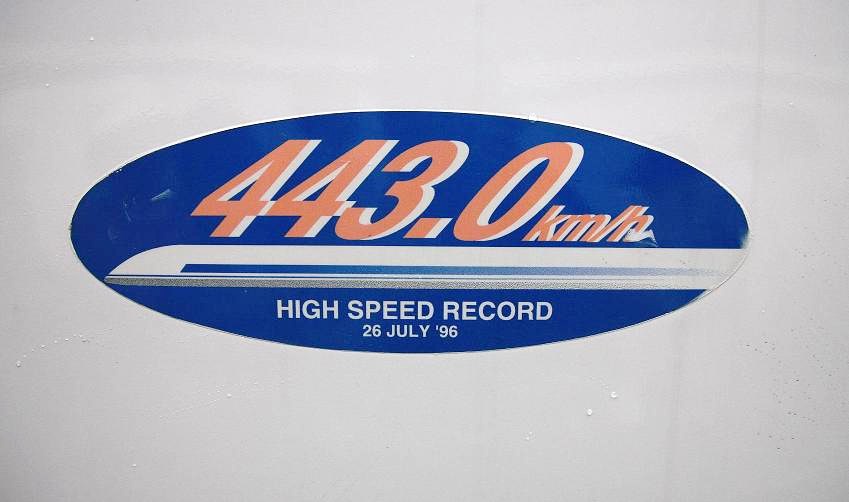300X on:
[Wikipedia]
[Google]
[Amazon]
"300X" was the name given to the 6-car experimental


 The train was unveiled on 22 December 1994.
Test-running on the
The train was unveiled on 22 December 1994.
Test-running on the
File:Shinkansen955-1-2.jpg, Car 955-1 preserved at Maibara, July 2006
File:300x 955-6.JPG, Car 955-6 preserved at Hamamatsu Works, July 2006
File:300X 955-6 SCMaglev and Railway Park 20110605.jpg, Car 955-6 preserved at the SCMaglev and Railway Park in Nagoya, June 2011
Shinkansen
The , colloquially known in English as the bullet train, is a network of high-speed railway lines in Japan. Initially, it was built to connect distant Japanese regions with Tokyo, the capital, to aid economic growth and development. Beyond l ...
train developed in 1994 by the Central Japan Railway Company
is the main railway company operating in the Chūbu (Nagoya) region of central Japan. It is officially abbreviated in English as JR Central and in Japanese as JR Tōkai ( ja, JR東海, links=no). ''Tōkai'' is a reference to the geographical ...
(JR Central) in Japan to test technology to be incorporated in future shinkansen trains operating at speeds of or higher.
Design
Manufacture of the train was shared among four different manufacturers, with a number of different body construction methods used. The two ends cars employed differing nose designs, and a number of pantograph shroud designs were tested over the lifetime of the trainset.Formation
Cars 2 and 5 were fitted withpantographs
A pantograph (, from their original use for copying writing) is a mechanical linkage connected in a manner based on parallelograms so that the movement of one pen, in tracing an image, produces identical movements in a second pen. If a line dr ...
.

955-1
End car with "cusp" nose design, built byMitsubishi Heavy Industries
is a Japanese multinational engineering, electrical equipment and electronics corporation headquartered in Tokyo, Japan. MHI is one of the core companies of the Mitsubishi Group and its automobile division is the predecessor of Mitsubishi Mo ...
. The body was constructed of rivetted Duralumin
Duralumin (also called duraluminum, duraluminium, duralum, dural(l)ium, or dural) is a trade name for one of the earliest types of age-hardenable aluminium alloys. The term is a combination of '' Dürener'' and ''aluminium''.
Its use as a tra ...
. This car had no passenger seats.
955-2
The body was constructed byNippon Sharyo
, formed in 1896, is a major rolling stock manufacturer based in Nagoya, Japan. In 1996, it abbreviated its name to "日本車両" Nippon Sharyō. Its shortest abbreviation is Nissha "日車". It was a listed company on Nikkei 225 until 2 ...
using large hollow aluminium extrusions. This was the only car in the trainset to be fitted with passenger seats.
955-3
This vehicle was constructed byKawasaki Heavy Industries
(or simply Kawasaki) is a Japanese Public company, public multinational corporation manufacturer of motorcycles, engines, Heavy equipment (construction), heavy equipment, aerospace and Military, defense equipment, rolling stock and ships, headq ...
using spot-welded large aluminium extrusions and was fitted with active tilting.
955-4
This vehicle was constructed by Nippon Sharyo using large hollow aluminium extrusions, similar to car 2, and was equipped with large side doors for installing and removing test equipment.955-5
This vehicle was constructed byHitachi
() is a Japanese multinational corporation, multinational Conglomerate (company), conglomerate corporation headquartered in Chiyoda, Tokyo, Japan. It is the parent company of the Hitachi Group (''Hitachi Gurūpu'') and had formed part of the Ni ...
using aluminium honeycomb panels. This car had no seats.
955-6
Hitachi-built end car with "wedge" nose design. The body was constructed of brazed aluminium honeycomb panels.History

Tōkaidō Shinkansen
The is a Japanese high-speed rail line that is part of the nationwide Shinkansen network. Along with the Sanyo Shinkansen, it forms a continuous high-speed railway through the Taiheiyō Belt, also known as the Tokaido corridor. Opened in 1964, ...
was delayed by track damage caused by the Great Hanshin earthquake
The , or Kobe earthquake, occurred on January 17, 1995, at 05:46:53 JST (January 16 at 20:46:53 UTC) in the southern part of Hyōgo Prefecture, Japan, including the region known as Hanshin. It measured 6.9 on the moment magnitude scale and had ...
in January 1995, but full-scale test-running commenced on 25 May 1995, between Maibara and Kyoto
Kyoto (; Japanese: , ''Kyōto'' ), officially , is the capital city of Kyoto Prefecture in Japan. Located in the Kansai region on the island of Honshu, Kyoto forms a part of the Keihanshin metropolitan area along with Osaka and Kobe. , the ci ...
.
On 21 September 1995, the Class 955 train recorded a maximum speed of on the Tokaido Shinkansen between Maibara and Kyoto.
On 11 July 1996, the train recorded a maximum speed of , exceeding the previous national speed record of set in December 1993 by JR East
The is a major passenger railway company in Japan and is the largest of the seven Japan Railways Group companies. The company name is officially abbreviated as JR-EAST or JR East in English, and as in Japanese. The company's headquarters are ...
's Class 952/953 "STAR21" experimental train.
On 26 July 1996, the train recorded a Japanese national speed record of on the Tokaido Shinkansen between Maibara and Kyoto. This record still stands.
The Class 955 trainset was officially withdrawn on 1 February 2002.
Preservation
End car 955-1 is preserved outdoors at the RTRI large-scale wind tunnel test facility inMaibara, Shiga
is a city in Shiga Prefecture, Japan. , the city had an estimated population of 38,259 in 14761 households and a population density of 150 persons per km². The total area of the city is .
Geography
Maibara is located in northcentral Shiga Pre ...
. End car 955-6 was initially preserved inside JR Central's Hamamatsu Works, and was moved to the new SCMaglev and Railway Park
The is a railway museum owned by Central Japan Railway Company (JR Central) in Nagoya, Japan. The museum opened on 14 March 2011.
The museum features 39 full-size railway vehicles and one bus exhibit, train cab simulators, and railway model dio ...
in 2010.
References
{{Shinkansen Experimental and prototype high-speed trains Hitachi multiple units Land speed record rail vehicles Shinkansen train series Tilting trains Train-related introductions in 1994 Kawasaki multiple units 25 kV AC multiple units Nippon Sharyo multiple units